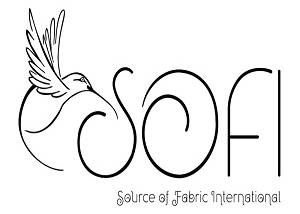Printed knit fabrics are a staple in both the fashion and home decor industries due to their versatility, stretchability, and endless design possibilities. Understanding the process of creating printed knit fabrics is key for designers and consumers alike, as it sheds light on the techniques and technologies that bring vibrant patterns to life. From yarn selection to digital printing, the creation of printed knit fabrics is an intricate process that combines artistry with cutting-edge technology.
In this article, we’ll explore the process of creating printed knit fabrics, focusing on the various techniques and technologies that help produce these fashionable and functional textiles. Whether you are a designer looking to enhance your product line or a fabric enthusiast, understanding this process can inspire your next project.
1. Yarn Selection and Knitting: The Foundation of Printed Knit Fabrics
The process of creating printed knit fabrics begins with selecting the right yarn. This is a crucial step, as the type of yarn chosen affects the fabric’s texture, stretch, and durability. Common yarns used for knit fabrics include cotton, polyester, spandex, and blends of these materials.
Knitting starts as soon as the yarn is chosen. This involves interloping yarns to form a stretchable fabric. Weft knitting and warp knitting are the two main categories of knitting. Weft knitting is more commonly used for printed knit fabrics because it allows for greater flexibility and stretch in all directions.
After the fabric is knitted, it is prepared for the printing process. This may involve washing, bleaching, or applying a primer to ensure that the surface is ready to accept the dye or pigment.
2. Printing Techniques in Creating Printed Knit Fabrics
The printing technique employed is one of the most crucial elements in the creation of printed knit materials. There are several different techniques, each offering unique advantages depending on the design and fabric type. The following are a few of the most widely used printing methods:
- Screen Printing: In this conventional technique, layers of ink are applied to the cloth using a stencil, also called a screen. While it’s labor-intensive, screen printing is known for producing vibrant, long-lasting prints. It works well for bold patterns with limited colors but is less ideal for complex designs.
- Digital Printing: One of the most advanced and popular methods today, digital printing uses inkjet technology to apply intricate designs directly onto the fabric. This technique offers a high degree of precision, allowing for unlimited color options and highly detailed patterns. Digital printing is also more eco-friendly, as it uses less water and produces less waste.
- Sublimation Printing: Sublimation is a method where the design is first printed onto a transfer paper, and then transferred to the fabric using heat and pressure. This technique works best on synthetic fibers and results in vibrant, long-lasting prints that don’t fade or crack over time.
- Rotary Screen Printing: This method combines the accuracy of digital printing with the efficiency of screen printing. It uses a cylindrical screen to continuously print designs onto long rolls of fabric, making it a great choice for large-scale production.
3. Color Fixation: Securing the Print
After the fabric has been printed, the next step is to fix the colors to ensure they remain vibrant and don’t fade with washing or wear. This process varies depending on the type of printing method used. For instance, in digital printing, heat is often used to set the ink into the fabric. In other methods like screen printing, the fabric may need to be steamed or cured to lock in the colors.
The fixation step is crucial for maintaining the quality and longevity of printed knit fabrics, especially for garments or home textiles that will undergo frequent washing and handling.
4. Finishing Processes: Enhancing Fabric Properties
Following the completion of the printing and color fixation procedures, the fabric is given finishing treatments to enhance its texture, robustness, and use. Some common finishing techniques include:
- Brushing: This process softens the surface of the fabric, making it feel smooth and plush.
- Heat Setting: Heat setting stabilizes the fabric, ensuring that it retains its shape and elasticity after washing and wearing.
- Moisture-Wicking Treatments: For fabrics used in sportswear or activewear, moisture-wicking finishes can be applied to help draw sweat away from the body, keeping the wearer dry and comfortable.
These finishing processes are particularly important for knit fabrics, as they enhance their natural properties and make them more suitable for various applications.
5. Quality Control: Ensuring Perfection
The final step in the process of creating printed knit fabrics is quality control. Each fabric batch is thoroughly inspected to ensure that the colors are consistent, the print is precise, and the fabric meets industry standards. This step helps prevent issues such as misaligned patterns, color bleeding, or defects in the fabric’s structure.
Quality control is vital for maintaining the high standards expected in the fashion and home decor industries. After passing inspection, the printed knit fabrics are ready to be used in the creation of stylish garments, accessories, and home furnishings. Read More 5 Benefits of Exploring the Versatility of Printed Knit Fabrics
SOFI: Your Source for High-Quality Printed Knit Fabrics
As a trusted wholesale fabric supplier, SOFI offers a wide range of high-quality printed knit fabrics, sourced and produced using the latest techniques and technologies. Whether you need customized fabrics for fashion collections or home decor projects, SOFI is committed to providing versatile and durable fabric solutions. Our extensive selection ensures you’ll find the perfect fabric for your needs, backed by our commitment to excellence in sourcing and production.
Conclusion:
The process of creating printed knit fabrics is both an art and a science, combining innovative technologies and meticulous techniques to produce versatile, high-quality textiles. From yarn selection and printing methods to finishing processes, each step contributes to the final product’s beauty and functionality. At SOFI, we specialize in supplying wholesale printed knit fabrics that meet the highest standards of quality and design. Let us help you bring your creative vision to life with our expert fabric solutions.


